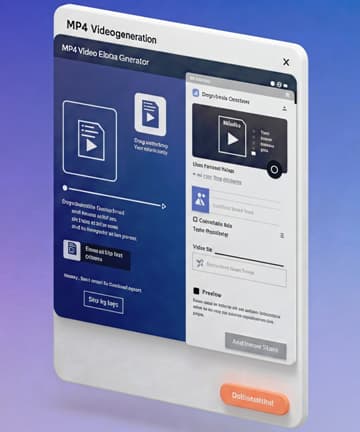Interactive Color Picker
Make Your Blogger Posts Have a Free In-Post Color Picker Tool
Do you ever get one of those weird feelings that your blog posts are going to do that little extra thing? You put hours into pouring in the writing, the research, and bled creating good content. You title-optimize, select pretty pics, and offer your readers real value. And then, occasionally, it's like screaming at the ether. They read, and they depart. The experience is passive. What if you flip it on its head? What if your readers are able to do something immediately in your article
Today, we're releasing a small but potent update that accomplishes just that. We're adding an in-post color picker widget you can add to any Blogger post. No, this is not a bloated widget or pay-me-plugin. It's a single line of code you simply cut and paste. It's interactive, dazzlingly simple to install, and brings your content from static page to experiential workshop in mere seconds.
Let’s be real. As creators, we’re all looking for an edge—not a gimmick, but a genuine way to connect and provide more value. This tool is a system for doing just that. Let’s explore how it works, and more importantly, why it can make your blog a place people don’t just visit, but remember and return to.
Beyond the Wall of Text: Why Interaction Matters
Before we even mention the word "tool," let's discuss the world we're writing. Your readers aren't reading on blogs anymore. They're on Instagram, TikTok, Twitter, where every tick of every second is a tap, swipe, click. They've been conditioned to respond, not read. A text-only, static update, however sweet, sometimes can seem like something from last century.
That makes it a "content blindness" issue. If already today they've read ten articles that all appear identical, the eleventh will pass through. The solution isn't always more or longer content. It's smarter content. It's about creating an experience that breaks the pattern.
That's where a utility shines. A utility is something that solves a small, nagging issue for your reader. It's not copywriting, it's a device. It tells them to put down the scroll and take an action. That redirection of attention in itself—away from content creator and towards experience creator—is one of the most powerfully persuasive things you can do for your blog.
What Is the In-Post Color Picker Tool, Really?
Let’s paint a picture. Imagine your reader is halfway through your amazing article on creating a calming brand palette. You’ve just described the power of a soft, muted blue. Right below that paragraph, they see it: a beautifully designed, interactive color picker.
It's tiny, standalone module with big swatch of color and an embedded pair of text boxes. Curious, they click the swatch. Their own color chooser for their computer appears, second nature and familiar to them. They click their way through the chooser until they choose a dusty rose color that is their favorite. The instant added they click "OK," the gizmo in your post will repaint quickly to display to them exactly the same codes for the color:
HEX: #d3a8a8
RGB: rgb(211, 168, 168)
HSL: hsl(0, 31%, 74%)
On the right side of each code is a swift "Copy" button. One click, that code is in their clipboard, ready to be copied into Canva, Figma, or their site's CSS file. They didn't need to click off your post. They didn't need to search for "color picker" on Google. You gave them the solution, just when they needed it. That's the best thing about this tool. It's clean, works fine on desktop and mobile, and—most importantly—is coded nicely so it won't sully the appearance of your blog.
The Real Deal: Three Honest Reasons This Is Worth Your Time
It's a smart thing. But you're sidetracked writing a blog, and you don't care if it's worth your time to spend five minutes of your life installing it. No gimmick—these guys are doing something with this content. Here's the straight stuff, not hype.
1. It Skyrockets Engagement and Dwell Time
This is dollar one for SEO. Google and the other search engines are highly interested in signals of user behavior. One of the most coveted is dwell time — how long the user stays on your page before clicking on the search results a second time. The longer the dwell time, the better that tells Google that your page is high quality and got the question right.
A static refresh might catch a glimpse and hold it for three minutes. But insert an interactive factor? That individual is going to interact with it for two more minutes. They're going to find their favorite color. They're going to attempt to match a color in their logo. That "play" isn't lost time; it's engagement. It's a robust, lovely message to Google that your content is engaging and of value. You're not buying a reader, you're buying their time, and that's the most valuable thing on the web.
2. It Gives People Real, No-Hype Value
The key to building a loyal following is providing people with answers for what they're seeking. This software turns your blog into an asset, not a magazine. Consider who this means you get immediately:
For design bloggers: You're blogging about color theory. Rather than demonstrating a predetermined color scheme, encourage readers to use the tool to discover their own complementary colors. You are teacher-facilitator.
For DIY or craft bloggers: You have made a tutorial of a scarf with three colors knitted. You can encourage the reader to make their own using the color picker so they can visualize another appearance in their mind before them purchasing the yarn.
For web developers and tech writers: You're establishing CSS color properties. How better to do that than to cause the flip to occur in real time as they change the color? It renders an abstract idea concrete and memorable as a learning experience.
For home decor and fashion bloggers: You’re showcasing the "color of the year." Your readers can use the tool to find the exact shade for a feature wall or a new accessory, then copy the code to get a perfect match at the paint store or online shop.
In every one of these instances, you are taking an anticipatory step on one action for your reader. You are leading them and providing the solution ahead of time. That is how you become an absolute pro in your niche.
3. It Makes You an Absolute Pro
Be honest to perception. If you turn over into a blog that has interactive, home-cooked-feeling content, it just feels more professional. It tells you they care, they've put in an effort, and they have the correct sense of what readers need. It politely informs you that you're not some blogger cranking out content; you're a builder building a platform.
It's the tiny thing that creates your brand. It's the distinction between a generic template and a breathtakingly well-composed experience. People listen. They'll remember the blog that provided them with something worth their time, not the blog that provided them with something else they didn't require. It's an unobtrusive form of authority that will cause them to trust you more than whatever "expert" moniker you can apply to your page.
Final Thoughts: Build Experience, Not Posts
It's not a gimmick feature because it might otherwise seem. It's a mindset. It's a shift from pushing information and a shift towards building useful, memorable content.
When you give others something more than words, you stand out. You're a destination. Begin to view what you write on your blog less as something that has to be read and more as a place for interaction. Make your readers do something, and they'll reward you in attention, their loyalty, and their trust. I promise you'll be amazed at how much your readers (and Google) adore it.





